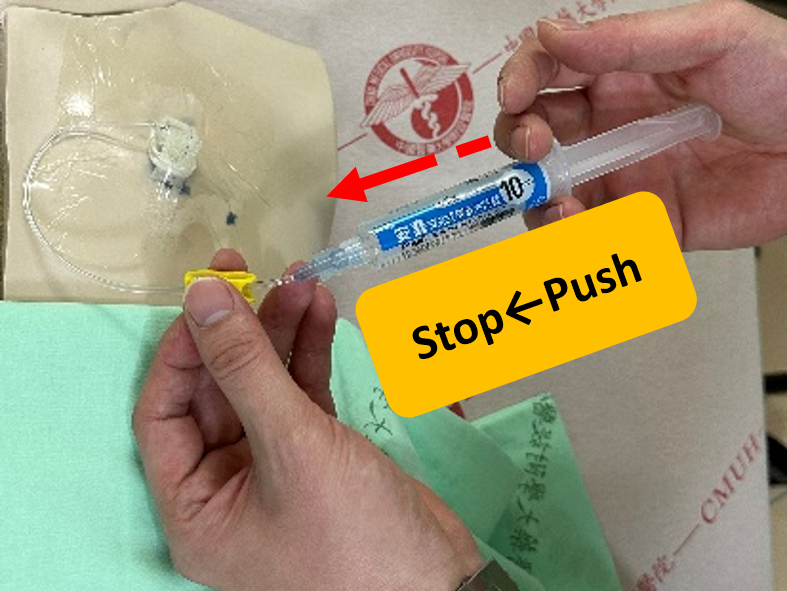Preparation of Supplies
- Alcohol Pads
- Paper Tape
- IV Lock
- 2 X 2 Gauze Pads
- Normal Saline Solution (10ml)
- Hepac Lock Flush (10ml)
Steps
|
1. Prepare the environment and supplies: Close the window, turn off the electric fans and keep the surrounding clear for changing the dressing. |
2. Wash hands. |
|
3. Lie down in a comfortable position: Expose the position of the implanted port and observe the appearance of the port. |
4. Prepare the supplies. |
|
5. Clamp the yellow catheter clamp.
|
6. Cover the connection completely with alcohol pads. Rotate and rub with force to sterilize for 10 seconds or more.
|
|
7. Connect and rinse with normal saline solution (10ml), open the yellow clamp for the implanted port and use the syringe to do suction check repeatedly for any reverse flow of blood, and the rinse by “push-stop-push-stop” method.
|
8. Connect with Hepac Lock Flush (10ml) and rinse the catheter with “Push-Stop-Push-Stop” method to calm the yellow catheter clamp on the implanted port.
|
|
9. Connect with new IV lock.
|
10. Cover the IV lock with 2 x 2 gauze pads.
|
|
11. Complete illustration.
|
Time for Port Flushing
- After the instillation of Total parenteral nutrition (TPN) is completed, flush the port and replace the IV lock each time without repeated use.
Precautions
- Execute port flushing and adopt sterilization during the process of replacing IV lock.
- Observe the implanted port needle for any redness, swelling, fever, pain, and any purulent discharge daily.
- Do not let the IV cannula get in contact with water. Adopt protective device during shower to prevent the dressing from immersion and infection.
- Do not directly inject with force when flushing the catheter. Test the reverse flow of blood and evaluate the non-obstruction of the catheter, including any distortion, opened camp, any resistance, any reverse flow of blood, and slower dripping speed, thereby to prevent the high-pressure causing catheter rupture or separation between the catheter and the base.
- In case of any signs of infection on the injection area, such as redness, swelling, fever, pain, rush, lumps, ooze, purulent discharge, or fever, please return to the hospital immediately.
- Replace the needle at the hospital every 7 days to avoid infection.






.png)

